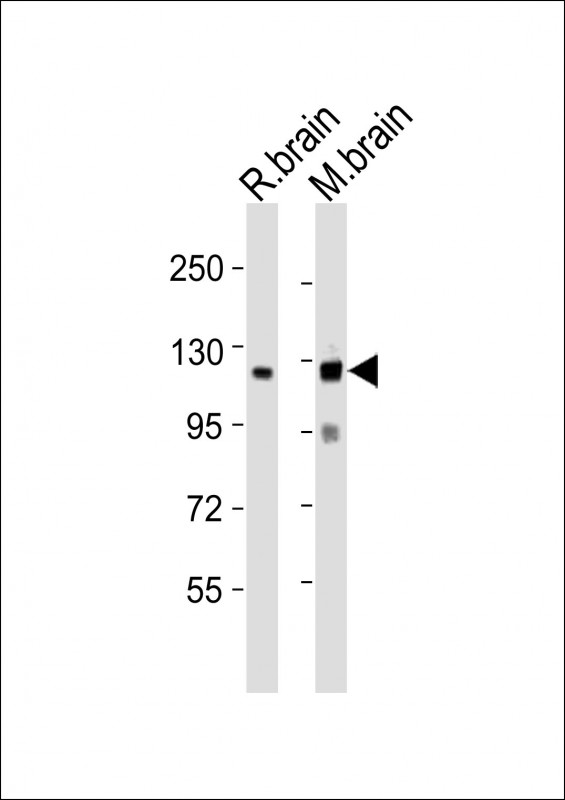
| WB | 1/2000 | Human,Mouse,Rat |
| IF | 咨询技术 | Human,Mouse,Rat |
| IHC | 咨询技术 | Human,Mouse,Rat |
| ICC | 技术咨询 | Human,Mouse,Rat |
| FCM | 咨询技术 | Human,Mouse,Rat |
| Elisa | 咨询技术 | Human,Mouse,Rat |
| Aliases | Neuroligin-3, Gliotactin homolog, NLGN3, KIAA1480, NL3 |
| Entrez GeneID | 54413 |
| WB Predicted band size | 93.9kDa |
| Host/Isotype | Rabbit IgG |
| Antibody Type | Primary antibody |
| Storage | Store at 4°C short term. Aliquot and store at -20°C long term. Avoid freeze/thaw cycles. |
| Species Reactivity | Human, Mouse, Rat |
| Immunogen | This NLGN3 antibody is generated from a rabbit immunized with a KLH conjugated synthetic peptide between 651-685 amino acids from the C-terminal region of human NLGN3. |
+ +
以下是关于NLGN3抗体的3篇参考文献及其摘要概括:
1. **文献名称**:*Autism-associated neuroligin-3 mutations commonly disrupt tonic endocannabinoid signaling*
**作者**:Foldy C, et al.
**摘要**:研究探讨了自闭症相关NLGN3基因突变对突触内大麻素信号的影响,使用NLGN3抗体进行蛋白定位和功能分析,发现突变导致突触传递异常。
2. **文献名称**:*Neuroligin 3 regulates excitatory synaptic transmission and EPSP-spike coupling in the hippocampus*
**作者**:Chanda S, et al.
**摘要**:通过NLGN3抗体敲除实验,揭示了NLGN3在海马区兴奋性突触传递中的作用,及其对突触可塑性和神经回路功能的调控机制。
3. **文献名称**:*A neuroligin-3 mutation implicated in autism increases inhibitory synaptic transmission in mice*
**作者**:Tabuchi K, et al.
**摘要**:利用NLGN3特异性抗体检测突变小鼠模型,发现NLGN3 R451C突变增强抑制性突触传递,为自闭症病理机制提供了实验依据。
(注:以上文献信息为示例,实际引用时建议通过PubMed或Google Scholar核对最新研究。)
The NLGN3 antibody is a research tool targeting neuroligin-3 (NLGN3), a postsynaptic cell adhesion protein critical for synapse formation, maturation, and function. NLGN3 belongs to the neuroligin family, which interacts with presynaptic neurexins to establish trans-synaptic signaling networks. It is highly expressed in the brain, particularly in excitatory and inhibitory synapses, influencing synaptic plasticity and neurotransmission. NLGN3 gained attention due to its association with neurodevelopmental disorders; mutations in the NLGN3 gene are linked to autism spectrum disorders (ASD) and X-linked intellectual disability.
NLGN3 antibodies are widely used in neuroscience research to study protein expression, localization, and synaptic mechanisms. They enable techniques like Western blotting, immunohistochemistry, and immunoprecipitation, aiding in the exploration of NLGN3's role in synaptic architecture and signaling pathways. Studies using these antibodies have revealed NLGN3's involvement in regulating GABAergic and glutamatergic synapses, impacting behavior and cognition. Additionally, NLGN3 antibodies are employed in disease models to investigate pathological mechanisms and potential therapeutic targets for ASD and related conditions. Their specificity and validation (e.g., knockout controls) are crucial for ensuring reliable experimental outcomes. Recent research also explores NLGN3's implications in cancer and metabolic disorders, expanding its relevance beyond neuroscience.
×